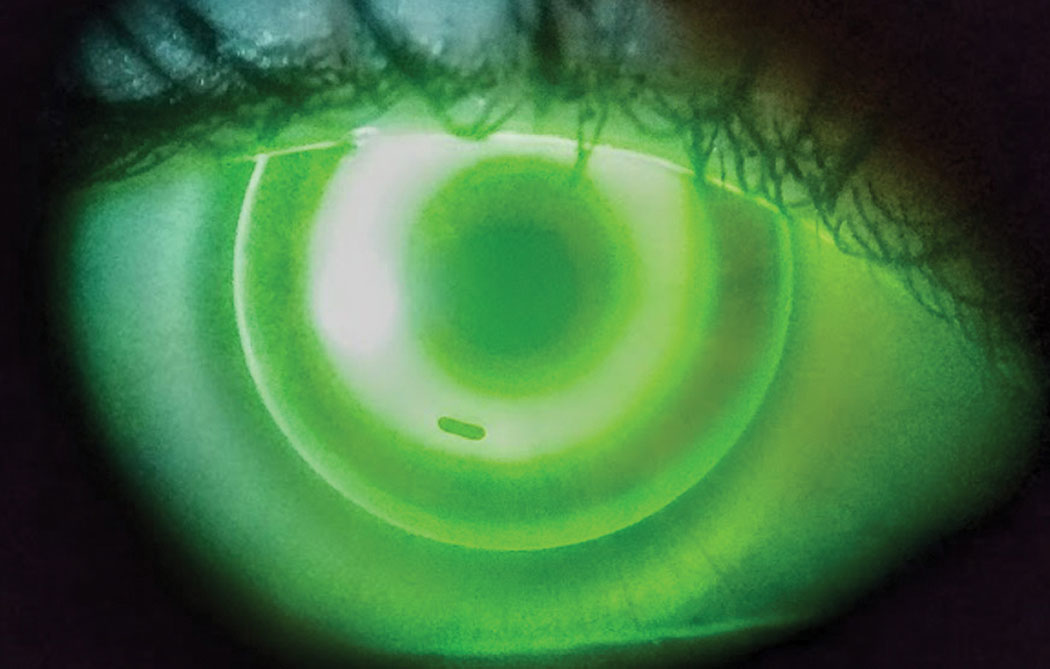 |
|
Taking a baseline AL measurement may help determine future axial elongation in ortho-K wearers. Photo: Dan Fuller, OD. Click image to enlarge. |
To date, few studies have focused on the effect of baseline axial length (AL) on the myopia control efficacy of orthokeratology (ortho-K) lenses in children. Researchers recently investigated the correlation between baseline axial length and axial elongation in myopes undergoing this myopia intervention. They found that children aged eight to 11 with a longer baseline AL, defined here as ≥24.5mm, demonstrated slower axial elongation during the first two years of treatment than those with baseline axial length below 24.5mm.
Data was obtained through an institution's medical records database after identifying children using spectacles or ortho-K for one to three years. During the one-year follow-up, 1,176 children (aged eight to 14) were included and divided into an ortho-K group (n=588) and a single-vision spectacle group (n=588). The ortho-K group participants (eight to 11) who completed the three-year follow-up (n=150) were further divided into three subgroups of 50 patients each by their baseline AL: below 24.5mm, between 24.5mm and 26mm, and 26mm or more. AL was measured at baseline and during the annual visit.
The ortho-K group exhibited slower one-year axial elongation (39% reduction) than the spectacle group. The one-year axial elongation was negatively correlated with initial age in both groups. A negative association between one-year axial elongation and baseline AL was observed in the ortho-K group but not in the spectacle group.
This relationship only existed in ortho-K participants eight to 11 years of age. For the younger ortho-K participants who completed the three-year follow-up, the annual axial elongation was significantly higher in subgroup one (those with the shortest axial lengths) for the first and second years but not in the third year compared with subgroups two and three.
The researchers believe that these findings may provide insight into establishing individual guidelines for controlling myopia using ortho-K in children with different baseline characteristics, especially those due to their predicted faster myopia progression.
“For younger children with baseline AL <24.5mm undergoing ortho-K, clinicians should make appropriate individual adjustments, such as optimizing the lens design or using combination therapy to achieve better outcomes,” they concluded in their paper on the study.
Lin W, Li N, Lu K, et al. The relationship between baseline axial length and axial elongation in myopic children undergoing orthokeratology. Ophthalmic Physiol Opt. November 15, 2022. [Epub ahead of print]. |

